For the first time in eight years, fighter jets flew from the decks of a British aircraft carrier.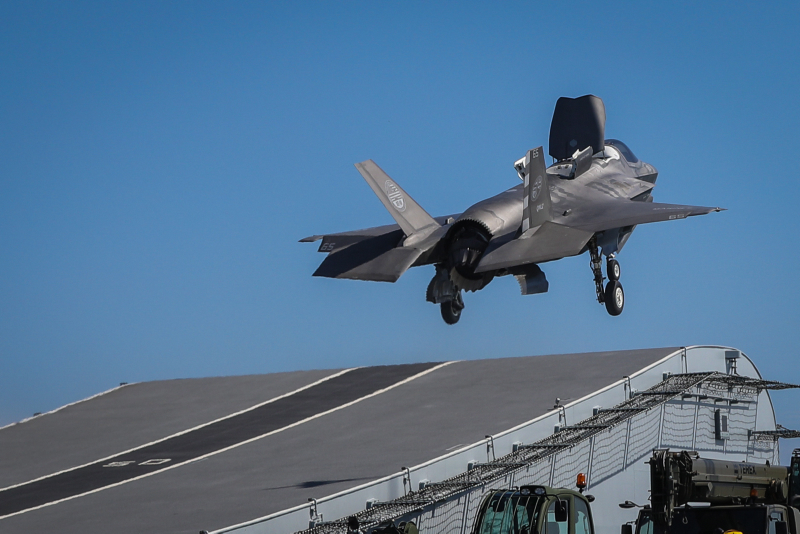 Royal Navy Cdr. Nathan Gray, 41, makes the first-ever F-35B Lightning II jet take off from HMS Queen Elizabeth.
Royal Navy Cdr. Nathan Gray, 41, makes the first-ever F-35B Lightning II jet take off from HMS Queen Elizabeth.
Photo: Lt. Cdr. Lindsey Waudby, Royal Navy
For 11 weeks, Marine Corps Maj. Michael Lippert, an F-35B test pilot, and three British pilots will test the performance of the F-35B Lightning II on the deck of the HMS Queen Elizabeth, the United Kingdom’s newest and largest aircraft carrier. Lippert was selected to be a part of this mission based off his position as the Marine Corps’ F-35B ship suitability project officer and his previous shipboard operational experience as a Harrier pilot.
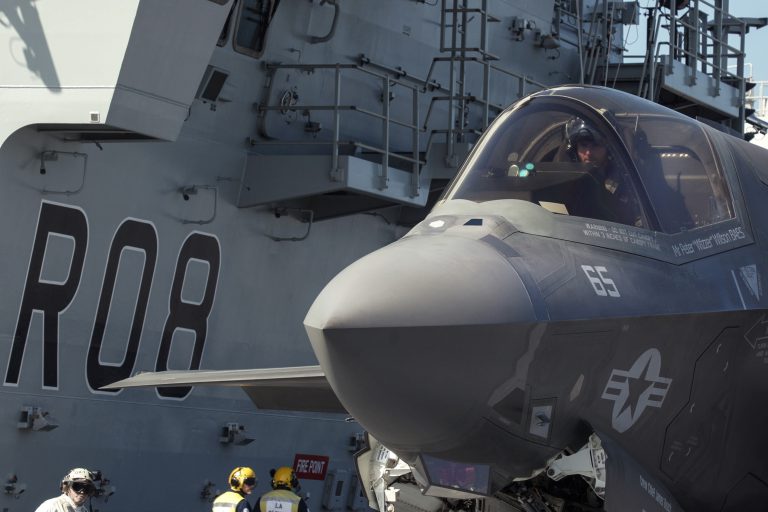 Royal Navy Cmdr. Nathan Gray in his F35B following the first deck landing aboard HMS Queen Elizabeth. Gray and Royal Air Force Sq. Ldr. Andy Edgell, both test pilots at the F-35 Integrated Test Force at Naval Air Station Patuxent River, Maryland, landed the first two jets on the new British aircraft carrier this week.
Royal Navy Cmdr. Nathan Gray in his F35B following the first deck landing aboard HMS Queen Elizabeth. Gray and Royal Air Force Sq. Ldr. Andy Edgell, both test pilots at the F-35 Integrated Test Force at Naval Air Station Patuxent River, Maryland, landed the first two jets on the new British aircraft carrier this week.
Photo: Petty Officer Aaron Hoare, Royal Navy
Collectively, the pilots are expected to conduct 500 takeoffs and landings onto the ship’s 280-meter deck.
Why the Trials?
The primary purpose of these initial trials is to evaluate the aircraft’s performance on the flight deck, as well as provide flight clearances for operational F-35 squadrons in preparation for future test and evaluation efforts. Eventually, the ship will deploy with an embarked carrier air wing onboard.
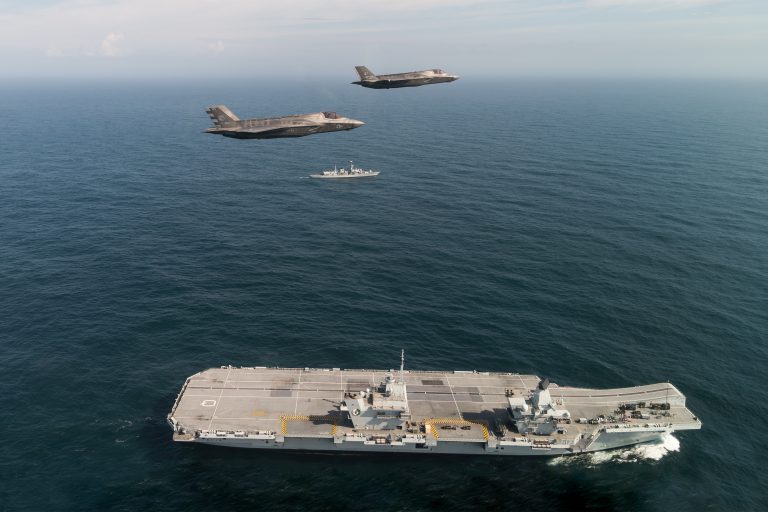 Two F-35B Lightning II fighter jets successfully landed onboard HMS Queen Elizabeth for the first time this week, laying the foundations for the next 50 years of fixed wing aviation in support of the UK’s Carrier Strike Capability.
Two F-35B Lightning II fighter jets successfully landed onboard HMS Queen Elizabeth for the first time this week, laying the foundations for the next 50 years of fixed wing aviation in support of the UK’s Carrier Strike Capability.
Photo: Dane Wiedmann, F-35 Integrated Test Force, Patuxent River, Maryland
The trials will also evaluate jet performance on more than 200 test points during various weather and sea conditions.
“The nature of this relationship means there is plenty of room for the exchange of lessons learned and operational practices,” Lippert said. “In short, we learn from each other, and that makes us all better. Lessons and experiences from this test effort will help to ensure interoperability between the services and will be of mutual benefit to the U.K. and U.S. Marine Corps.”
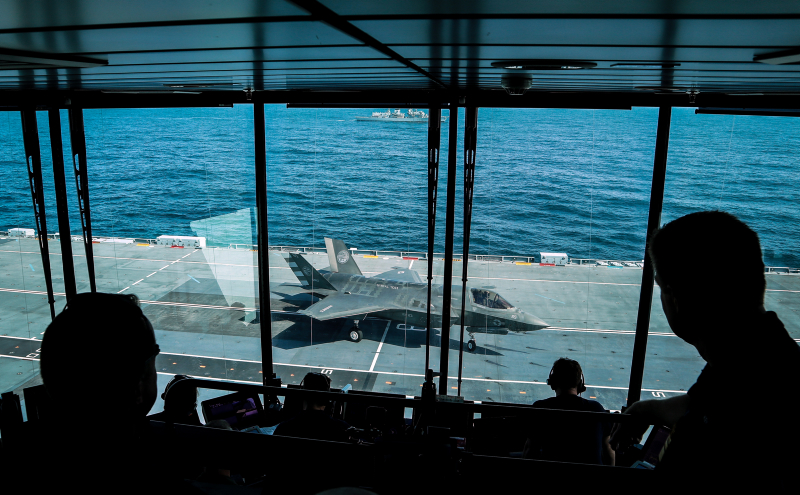 The view from the ‘Flyco’ of an F-35B Lightning II jet vertically landing onboard HMS Queen Elizabeth.
The view from the ‘Flyco’ of an F-35B Lightning II jet vertically landing onboard HMS Queen Elizabeth.
Photo: Petty Officer Matt Bonner, Royal Navy
How the F-35B Is Different
The F-35B is flown by the U.S. Marine Corps and the U.K.’s Royal Air Force and Royal Navy. It has the ability to land vertically like a helicopter and take off in a much shorter space, which increases its stealth.
“The improvements in Short Takeoff/ Vertical Landing handling qualities in the F-35B flight control system bring a substantially decreased workload to the pilot compared to legacy STOVL platforms like the Harrier,” Lippert said.
Along with these monumental flights, U.K. Royal Marines will also be conducting training with U.S. Marines as part of this mission. It will involve exercises to prove the ability to operate with other nations’ maritime and aviation assets.
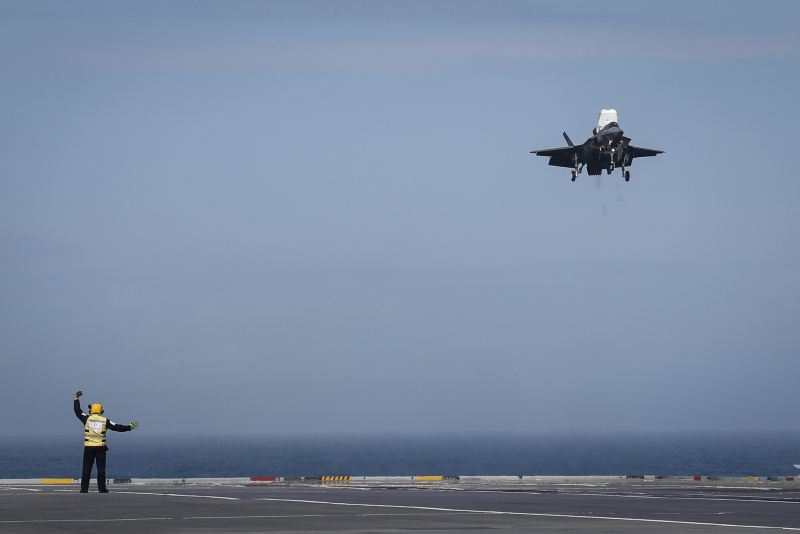 Leading Airman (Aircraft Handler) James Hope recovers the first-ever F-35B Lightning II jet to make a vertical landing onboard HMS Queen Elizabeth.
Leading Airman (Aircraft Handler) James Hope recovers the first-ever F-35B Lightning II jet to make a vertical landing onboard HMS Queen Elizabeth.
Photo: Lt. Cdr. Lindsey Waudby, Royal Navy
“I’m most looking forward to the opportunity and experience of flying the aircraft from a brand new ship,” Lippert said. “There will be many firsts out here, and it’s a wonderful privilege to be a part of it all.”
These trials will continue to build the defense relationship with our British partners.
By Air Force Staff Sgt. Megan Friedl, Defense Media Activity


